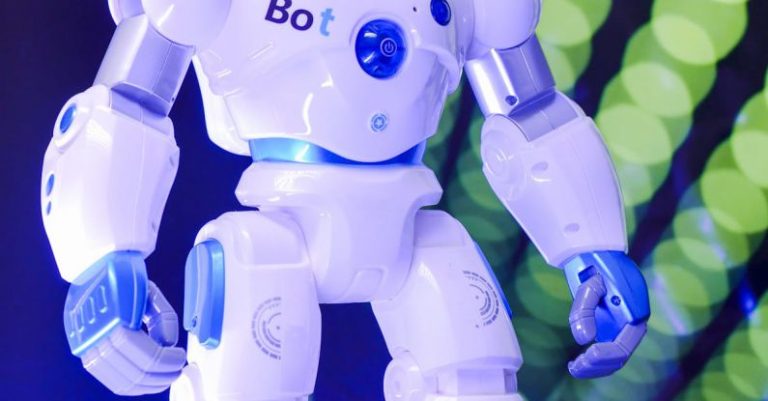Exploring the Interface: Iot Applications in Composite Construction
The construction industry is continually evolving, embracing technological advancements to enhance efficiency, safety, and sustainability. One such innovation making waves in the sector is the Internet of Things (IoT). Combining the physical world with the digital realm, IoT applications are revolutionizing the way construction projects are planned, executed, and monitored. In particular, the use of IoT in composite construction has opened up a realm of possibilities, enabling precise monitoring, predictive maintenance, and improved overall performance. Let’s delve into the interface of IoT applications in composite construction and explore the transformative impact it is having on the industry.
Enhanced Structural Monitoring
One of the key advantages of integrating IoT applications in composite construction is the ability to enhance structural monitoring. Composite materials, such as fiber-reinforced polymers, are increasingly being used in construction due to their high strength-to-weight ratio and corrosion resistance. By embedding sensors within composite structures, real-time data on factors like temperature, strain, and load distribution can be collected and analyzed. This data provides valuable insights into the structural health of the composite elements, allowing for early detection of potential issues and facilitating proactive maintenance measures.
Predictive Maintenance Strategies
IoT applications in composite construction also enable the implementation of predictive maintenance strategies. By leveraging data collected from sensors embedded in composite structures, construction professionals can gain a deeper understanding of how these elements perform under various conditions. This data-driven approach allows for the development of predictive maintenance models that can anticipate maintenance needs before they escalate into costly repairs. Through continuous monitoring and analysis, construction teams can optimize maintenance schedules, extend the lifespan of composite structures, and minimize downtime.
Optimized Energy Efficiency
Energy efficiency is a critical consideration in construction projects, with a growing emphasis on sustainable practices and green building standards. IoT applications play a significant role in optimizing energy efficiency in composite construction by enabling smart building management systems. These systems leverage IoT sensors to monitor energy consumption, occupancy patterns, and environmental conditions within buildings. By analyzing this data in real-time, construction teams can identify opportunities to reduce energy waste, improve thermal performance, and enhance overall building sustainability.
Remote Monitoring and Control
The integration of IoT applications in composite construction also facilitates remote monitoring and control capabilities. Construction sites are often spread across vast areas, making it challenging for project managers to oversee operations effectively. IoT technologies address this challenge by providing remote access to real-time data on construction progress, equipment performance, and safety metrics. Through IoT-enabled platforms, construction teams can monitor site activities, troubleshoot issues, and make data-driven decisions from anywhere with an internet connection. This level of remote visibility enhances project efficiency, reduces risks, and improves overall project outcomes.
Improved Safety Protocols
Safety is a top priority in the construction industry, and IoT applications are instrumental in enhancing safety protocols in composite construction projects. By deploying wearable IoT devices, construction workers can be continuously monitored for vital signs, fatigue levels, and exposure to hazardous conditions. In the event of an emergency, these devices can trigger automatic alerts and provide real-time location tracking to ensure swift response and assistance. IoT-enabled safety systems not only protect the well-being of construction workers but also contribute to a culture of safety awareness and proactive risk management on construction sites.
Innovative Data Analytics and Visualization
The wealth of data generated by IoT applications in composite construction requires sophisticated analytics and visualization tools to derive actionable insights. Advanced data analytics algorithms can process vast amounts of sensor data to identify trends, anomalies, and performance indicators in composite structures. Visualization techniques such as 3D modeling, digital twin simulations, and augmented reality interfaces enable construction professionals to interact with complex data sets in intuitive ways. By harnessing the power of innovative data analytics and visualization tools, stakeholders can make informed decisions, optimize construction processes, and drive continuous improvement in composite construction projects.
The Future of IoT in Composite Construction
As IoT technologies continue to evolve and mature, the future of composite construction looks increasingly promising. The seamless integration of IoT applications with composite materials opens up new possibilities for innovation, sustainability, and efficiency in construction projects. From enhanced structural monitoring to predictive maintenance strategies, optimized energy efficiency, remote monitoring and control, improved safety protocols, and innovative data analytics and visualization, IoT is reshaping the landscape of composite construction. By embracing these technologies and harnessing their full potential, construction industry professionals can unlock new levels of productivity, safety, and sustainability in the built environment.
In conclusion, the interface of IoT applications in composite construction represents a paradigm shift in how construction projects are conceptualized, executed, and maintained. By leveraging the power of IoT technologies, construction professionals can drive efficiencies, enhance safety, and optimize performance in composite structures. As the industry continues to embrace digital transformation, the integration of IoT in composite construction will play a pivotal role in shaping the future of construction practices. Embracing these innovations today will pave the way for a more sustainable, resilient, and intelligent built environment tomorrow.






